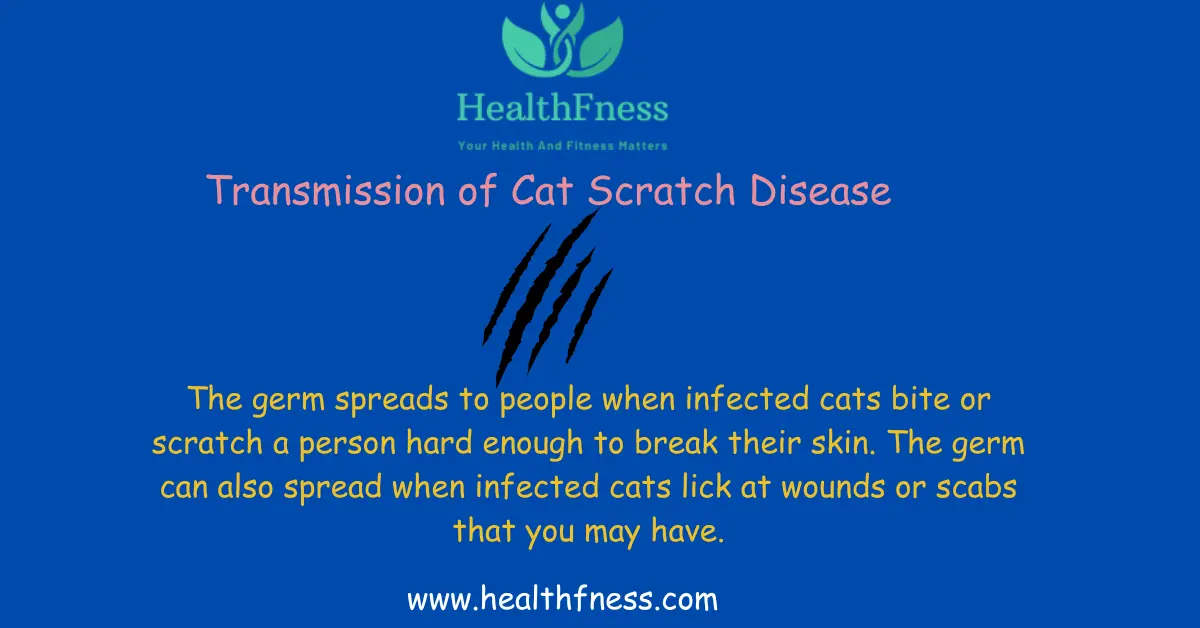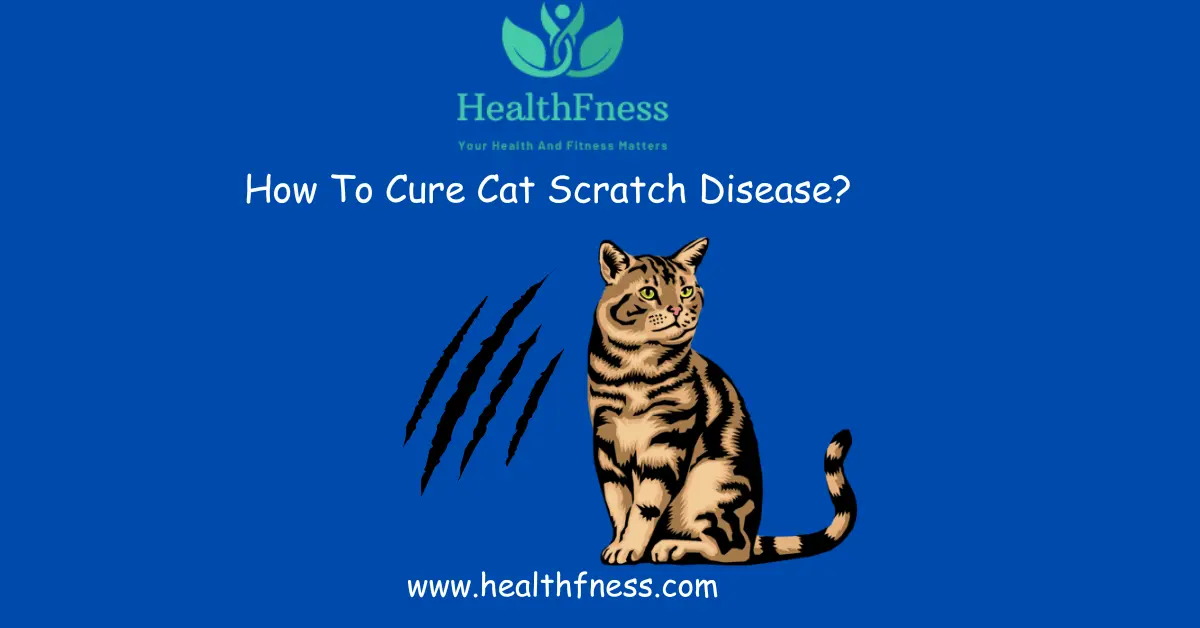The bacterial infection known as cat scratch disease (CSD), commonly referred to as cat scratch fever, affects both people and animals. Knowing how to treat cat scratch disease is crucial for your health, whether you own cats or just frequently interact with them. Let’s explore the answer to this question How To Cure Cat Scratch Disease?
What is Cat Scratch Disease?
The bacterium Bartonella henselae, which is frequently present in fleas that infest cats, is what causes cat scratch disease. Cat scratch disease can result from a human being bitten or scratched by an infected cat because the germs can enter through the punctured skin. The fact that not all cats with Bartonella henselae in their systems will exhibit symptoms of the illness is very important to remember. If you want to learn more about it then read our full-detailed article.
How To Cure Cat Scratch Disease?
Treatment Options For Cat Scratch Disease
Cat scratch sickness typically goes away on its own without special medical attention. Antibiotics, however, could be advised in cases that are severe or persistent. Antibiotics like azithromycin and doxycycline are frequently used to treat cat scratch illness. It is essential to take all of the antibiotics as directed by the doctor or other healthcare professional.
Home Remedies for Cat Scratch Disease
Several natural cures can help relieve symptoms and hasten healing in addition to medical care. Getting lots of rest, keeping up with excellent cleanliness, and using a warm compress to swollen lymph nodes are crucial self-care practices. Before attempting any home cures, you must, however, speak with a medical expert.
You May Also Like To Read: Cat Scratch Fever: Navigating its Hazards and Moving Towards Effective Treatment
Preventive Measures
It’s important to exercise caution when around cats to prevent cat scratch disease. Playing rough with cats is not recommended, especially with kittens who are more likely to scratch. Regularly groom your pets and check them for fleas to help limit the chance of transmission. Furthermore, keeping your cat’s nails trimmed will lessen the harm resulting from scratches.

You May Also Like To Read: Side Effects of Cat Scratch: Understanding the Risks and Precautions
How to Safely Interact with Cats
Learning safe cat interaction techniques is crucial to lowering the risk of cat scratch disease. Approach cats softly at all times and steer clear of rapid movements that can shock them. Before attempting to pet the cat, give it a chance to sniff you and become accustomed to you. Give the cat some room and refrain from interacting with them if they exhibit aggressive or uncomfortable behaviors.
Complications and Risks Of Cat Scratch Disease
Although cat scratch disease is typically not serious, it can sometimes become problematic. These can include the illness spreading to other bodily regions, a persistent fever, and in extreme circumstances, brain consequences. Severe symptoms are more likely to occur in people with weakened immune systems.
You May Also Like To Read: Can You Die From Cat Scratch Fever?
Cat Scratch Disease in Children
Children’s playfulness and frequent contact with animals make them more prone to cat scratch disease. Parents and other adult carers should keep a close eye on how their kids engage with cats and teach them how to handle and play with their feline friends.
When to Seek Medical Attention
Cat scratch disease typically goes away on its own, but it’s important to recognize when seeking medical assistance is necessary. Consult a medical practitioner right away if you have symptoms that are recurring or getting worse, such as a high fever, excruciating pain, or spreading redness around the injury site.
Cat Scratch Disease vs. Rabies
Given that both conditions may be contracted by contact with diseased animals, it is critical to distinguish between cat scratch illness and rabies. While rabies is a virus that can be dangerous, cat scratch illness is caused by a bacterium and not spread by people. Any suspected exposure to rabies should be reported right away to medical authorities.
FAQS
How do you heal cat-scratch disease?
Doctors usually treat cat scratch disease with antibiotics. If your doctor prescribed antibiotics, give them to your child on schedule and for as many days as prescribed. Kids with cat scratch disease don't need to be kept apart from other family members. Let your child rest as needed.
What are the best remedies for cat scratches?
Rinse for several minutes after cleaning. Control bleeding by applying pressure to the wound using an absorbent dressing or bandage. Apply antibiotic cream (e.g., Neosporin®) and cover with a sterile bandage. If your eye is scratched, seek immediate medical care.
What is the first line treatment for cat-scratch disease?
For most patients with mild or moderate CSD, only conservative symptomatic treatment is recommended because the disease is self-limited. Administer antipyretics and analgesics as needed. Local heat may be applied to the involved lymph nodes.
How is CSD treated?
Antibiotics may be used to speed recovery in cases of acute or severe illness but most people do not require treatment. Recovery occurs spontaneously within 2 to 4 months.
What is the fastest way to heal a cat scratch?
Assess how severe the scratch is according to the location, the depth, and your medical conditions. Clean the wound with some soap and warm water, after you've stopped the bleeding. Apply an antibiotic cream that can be bought over the counter. Bandage it carefully and keep it covered for at least two days.
Conclusion
Even though cat scratch disease is typically not serious, it still needs to be treated carefully to avoid consequences. You can enjoy the company of cats while lowering your risk of infection by being aware of the causes, symptoms, and preventive measures. Always put safety first while socializing with pets, and if you’re worried about getting sick, consult a doctor.
Video Credits:

